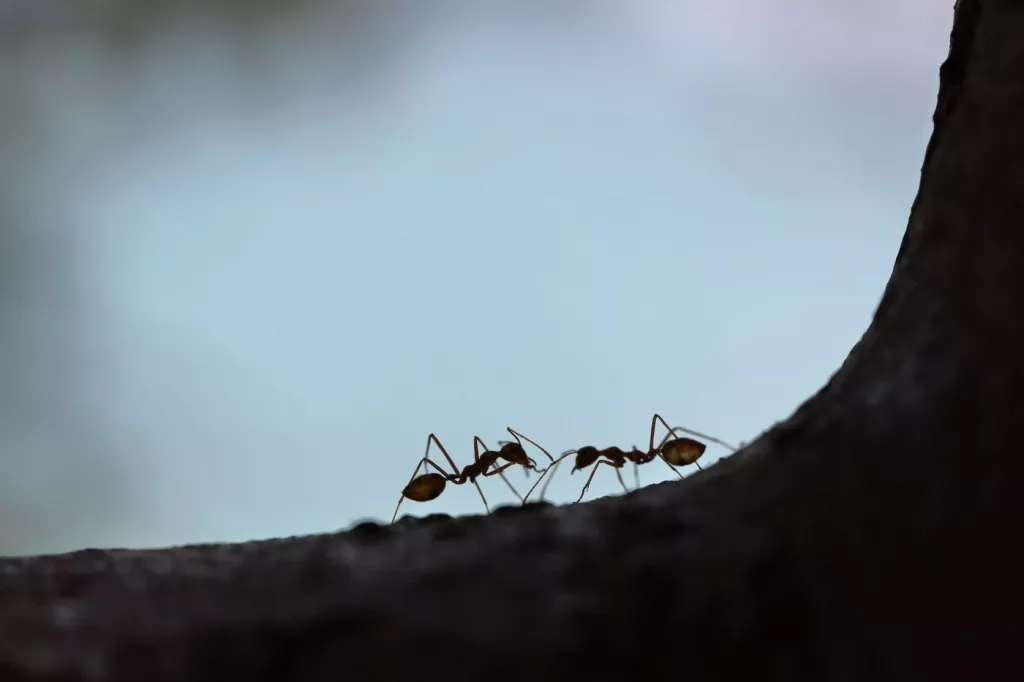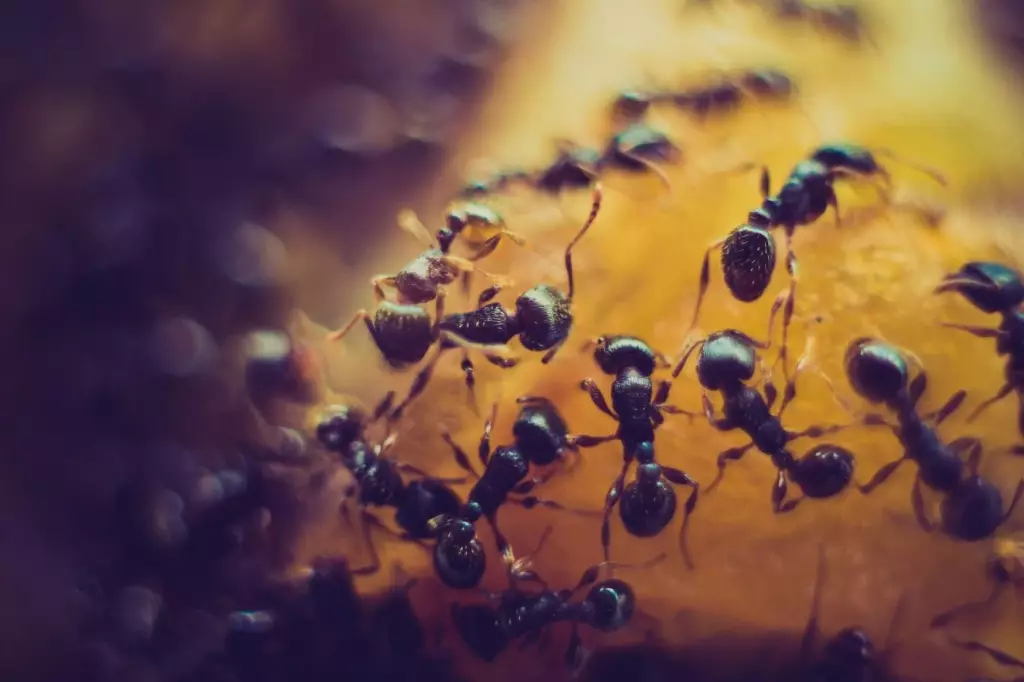How To Get Rid Of Ants - Without Harming Your Bees
The most common robbers of honey in beehives are other bees themselves and wasps. Another insect group, however, poses a threat to beehives as well, and these are the ants. In this article, we’ll look at a few notable tips to get rid of ants without harming bees.
The best way to get rid of ants is to prevent their entry. Slathering motor oil and other lubricants to your hive stand, placing moats on the stands, sprinkling cinnamon around the hive, and clearing the nearby bushes are some of the ways to deter ants without harming the bees.
Ants are destructive pests that can kill a bee colony if left on their own. Unfortunately, ants and bees are biologically related, so what can kill ants can kill bees too. Finding a way to get rid of ants without harming the bees is a tricky step, but we’ll discuss some proven steps, so keep reading.
Summary
- Ants can invade and kill off a colony of bees if left on their own.
- The best way to get rid of ants is to prevent their entry in the first place.
- Use lubricants in your hive stand, place moats, remove bushes, and sprinkle cinnamon to deter ants from your hive without harming your colony.

On this page:
How to Get Rid of Ants in a Beehive
Ants are one of the culprits that potentially threaten a beehive. Like wasps, they will take advantage of weak colonies and attack and enter when the colony’s defenses are down. It could be easy to get rid of ants, but they are in the same order as bees, and killing them would kill the bees too.
It’s a known fact that bees are important in the ecosystem, as they play a huge part in the pollination of plants and crops. However, a decline in the population of bees has been reported over the years, with a recent study reporting about a 30 percent loss rate during winter in the United States. With this data, beekeepers have been implementing ways to boost the population of bees and reduce situations that can kill off an entire colony.

Ants are fond of sweets, and they will eat all the honey treats in the hive and even the bee larvae as a protein source once they take hold of the whole colony. It is therefore important to protect the hive from these opportunistic pests by doing the following:
Build moats around the legs of the hive stands
Moats can be any wide container where your hive stand leg can fit, but with little space between the leg and the edge of the container. You may need four of these wide containers to place on the four legs of your hive.
The ants usually make their way to your hive by climbing up the leg stands. If a moat is placed around the hive stand, the ants will have to try to swim through it. However, water doesn’t seem to be the best option, as ants know how to float and will only use the surface tension of water to get around. It is therefore important to choose any other liquid to place in the moat, such as vegetable oil, soapy water, or used motor oil.
Apply dirty motor oil or grease on the leg of your hive stand
If moats aren’t available, you can just opt to paint the supporting beams and legs of the hive stand with used motor oil. This is an effective way to deter ants without affecting the bees. It would, however, require frequent monitoring, so you could do a touch-up every few months.
Sprinkle cinnamon around the beehive
While cinnamon is a known bee repellant, it could also repel ants. It is usually sprinkled on beehives built inside a property or on a household tree. But for ants, it is sprinkled on the ground so they wouldn’t make their entry to the beehive and to avoid deterring bees themselves.
The advantage of using cinnamon is that it is relatively safe and readily available on the market. Ground cinnamon is a better option since using cinnamon sticks is not as effective. Ants will easily make their way around them, so powdered cinnamon is preferred to keep the ants out.

This method, however, works best if done with other ant entry preventive tips, such as clearing bushes and undergrowth. Cinnamon should also be reapplied after rain, as it may wash out.
Remove thick bushes and undergrowth
Although vegetation such as weeds and tall grasses is good for bees, ants take advantage of them as bridges to get into the hive, so it’s best that you keep the vegetation around the hive to a minimum. You can also opt to completely get rid of undergrowth by covering the area with gravel soon after diminishing the heavy bushes.
Coat the hive stand legs using tanglefoot
As with the motor oil, you can use tanglefoot as an alternative if you don’t like the smell of the used motor oil. Tanglefoot is a sticky, glue-like substance usually applied to fruit trees as protection against ants and moths.
In beehives, they can be applied directly on the surface of the legs of the hive stand. When applying, be mindful to keep it as close to the ground as possible to avoid bees getting stuck on it.
Again, reapplication is needed every other month because the tanglefoot may garner debris and won’t be as effective, or it can get washed away.
Avoid spillage around the beehive and remove falling combs
As mentioned above, ants are fond of sweets. When you feed sugar syrup to your bees, you must make sure that there is no surplus that will spill around the hive. Dripped sugar syrup and exposed waxes, honey debris, or combs are baits for ants to come into your hive and get more.
Spillage is one of the few factors that encourage the robbing of honey. If spillages are unavoidable, cleaning up after them will be the best thing to do. As for excess combs or burr combs, they must be cut off and removed from the area as well, as they can also encourage ants to rob and kill the colony.
Lubricate the hive stands
Aside from motor oil, other lubricants can be used to make the hive stands as slippery as possible to discourage ants from climbing up on them. Vaseline can be used and spread on hive stands, as well as grease. Some beekeepers wrap the hive stands with cling film and spray them with lubricant to not degrade the quality of the stand.

Repair the hive boxes
If all else fails and ants are still able to climb up, your best bet is that they won’t find an entry point to the beehive. To do this, all cracks and holes in your hive boxes must be repaired immediately. Regular hive checking is important to make sure there are no unwanted entry points aside from the entrance itself.
Do Ants Harm the Bees?
It’s common to see ants everywhere. Finding a few of them in your hive is not something you should panic about. You can often see them between the top cover and the inner cover of your hive setup. You might even see them in your feeders, eating your sugar syrup. Seeing 10 to 20 individual ants is normal and can just be brushed away.
However, seeing a trail of ants coming and going in the hive and nesting in the hive indicates a call for action, because a huge ant invasion can cause hive failure. Usually, strong bee colonies are able to defend the hive from ants, but they have limits too, as worker bees have a lot of other jobs to do.
Ants will usually target small and weak colonies. A recently established swarm of bees is vulnerable to an ant infestation. Ants invading a strong colony can be a sign that the colony has weakened and will possibly abscond.
